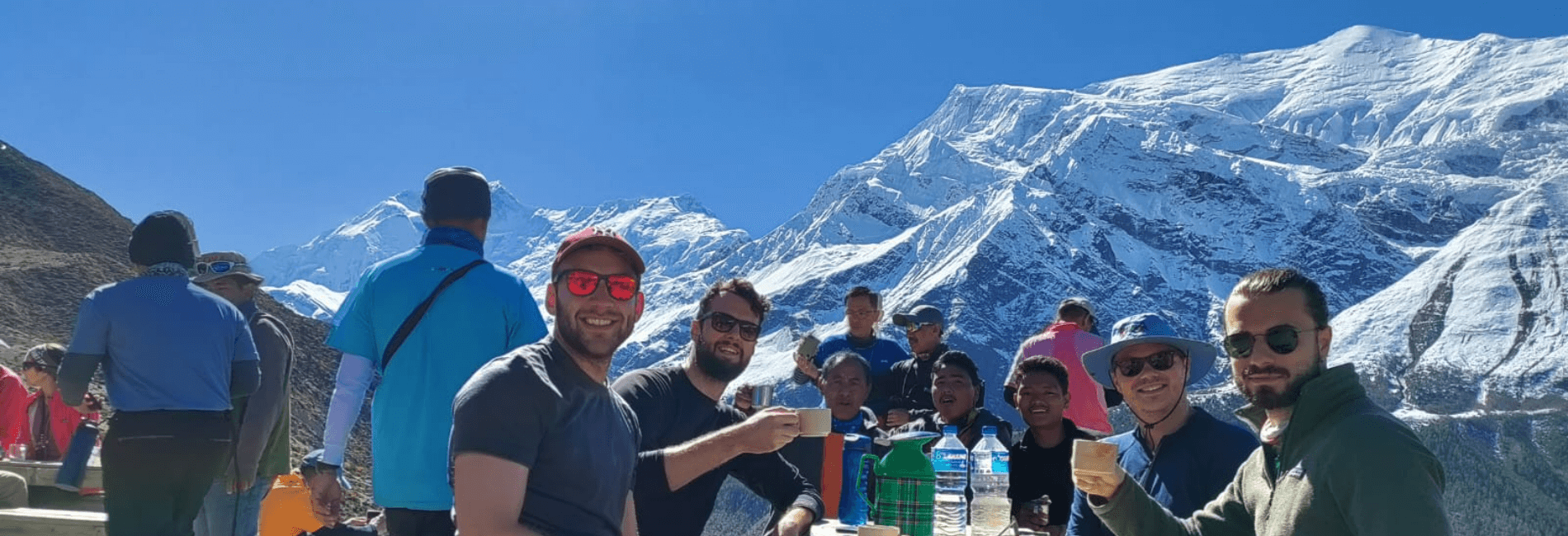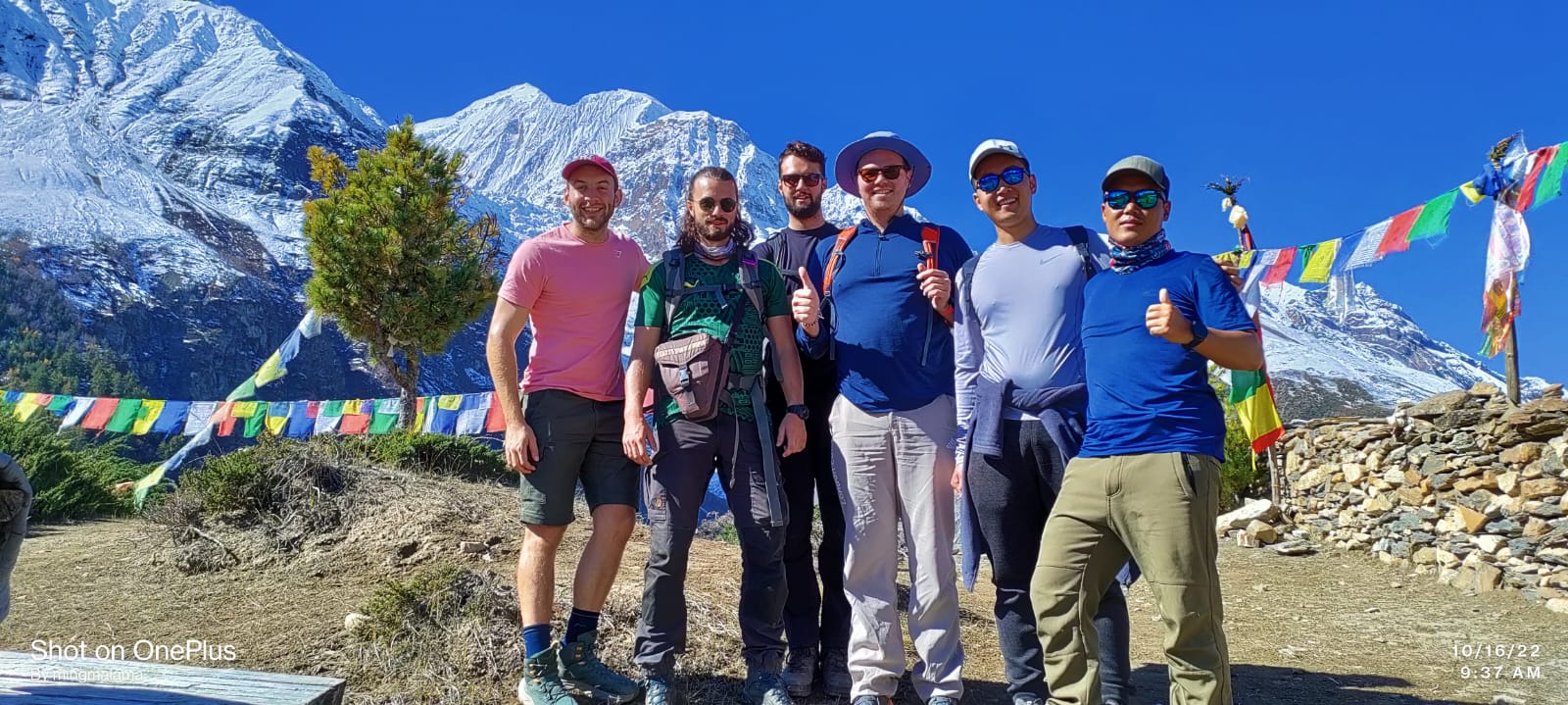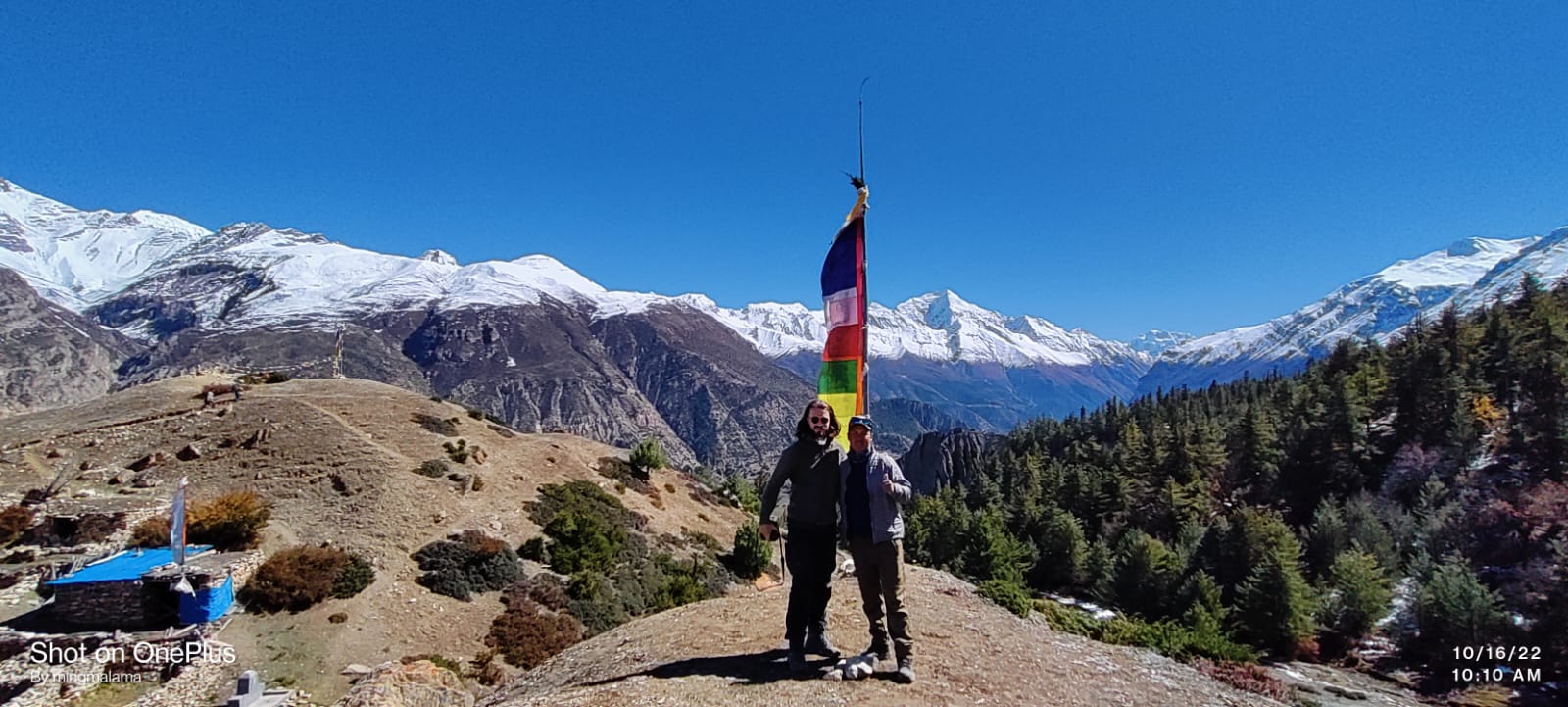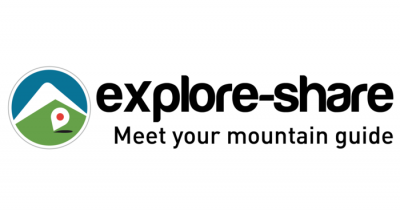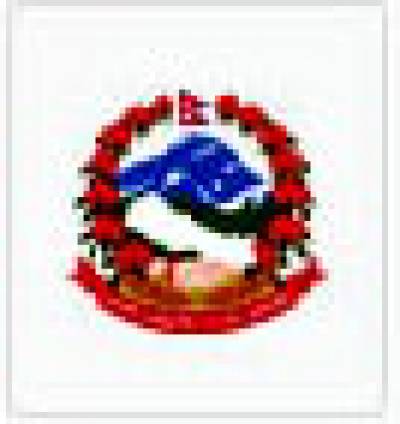ANNAPURNA CIRCUIT TREK 7 DAYS
The 7 days Annapurna Circuit Trek is, for a good reason, one of the most popular treks in Nepal’s Annapurna Conservation Area where you will witness enormous snow-covered mountains, deep gorges & high altitude passes.
This trek circles the Annapurna Ranges and crosses the high altitude Thorong La Pass (5419m) – the highest point reached on this trek. The trail leads you through the world's deepest gorge – the Kali Gandaki Gorge, and offers incredible views of the massive Mt. Annapurna I (world’s 10th highest - 8091m) and Mt.Dhaulagiri (8167m) to the west – the 7th highest in the world. Several other well known Himalayan Mountains are visible on the trek including Mt. Manaslu and Himal Chuli. This area is rich in the culture and traditions of the local Gurung and Thakali castes in the Manang District. We will pass through Brahmin, Chhetri, Tibetan Sherpa and Thakali villages where you will have an opportunity to view their unique cultural differences.
Along the route, you will see: Mt. Dhaulagiri, Mt. Annapurna I, Mt. Hiunchuli, Mt. Annapurna II, Mt. Manaslu, Mt. Nilgiri, Lamjung Himal, Tukuche, and Tilicho.
This 7-day trek will take you into the very heart of the Annapurna Region and starts at Chame and then to the Pisang Valley. Sherpa Expedition Teams experienced guide will take you to the villages of Manang, Yak Kharka, Thorong Phedi, Thorong La Pass, Muktinath, and to Pokhara.
Sherpa Expedition and Trekking have an excellent longstanding reputation and will take care of all permits, meals and accommodation on the trek. We will ensure that this the most enjoyable holiday of your life!
ITINERARY
Day 1 : Drive from Kathmandu to Chame (2,760m) Duration: 8-9 hours.
This morning we head from Kathmandu to Chame via Besisahar. Along the route you will get glimpses of several snow-capped mountains (Annapurna & Manaslu) as we cross rivers and pass through terraced farmland. We will travel by jeep for around 3 to 4 hours from Besisahar to Chame passing through villages such as: Sange, Bhulbhule, Nagdi, Chamche, Tal, Dharapani, Bagarchhap, Dankya, Timang, Thanchowk, and Chame.
Day 2 : Trek from Chame to Pisang (3300m) Duration: 5-6 hours.
Today we head out on the trail following the Marsyangdi River, with our first stop at Bratang and then on to Chemyau Kharka where there is a memorial to Japanese mountain climber Akira Ochiai. Further on we come to Dhukur Pokhari passing through forests along the way until we arrive at lower Pisang from where we will head to Upper Pisang as a means of acclimatizing. We will then return to Lower Pisang for the night.
Day 3 : Trek from Pisang to Manang (3,500m) Duration: 5-6 hours.
Pisang is the start of our trek into the upper Manang region. Today we follow the trail to Braga; a Tibetan village with its distinctive architecture and houses constructed one upon the other. One of Manang’s main features is its Gompa (Buddhist temple), being the largest in the Manang region. Manang is also very popular stopping-off point with trekkers who remain here for a day in order to acclimatize before heading to higher elevations. From Manang we have views of Mt. Chulu and Gangapurna.
Day 4 : Acclimatization day at Manang.
Today is set aside to acclimatize, something that is essential before heading to higher elevations. This will limit the possibility of suffering altitude sickness. In order to improve the process we will take a short hike to Bhojo Gumba or Gangapurna Lake. The remainder of your time can be spent exploring this fascinating town.
Day 5 : Trek from Manang to Thorong Phedi (4600m) Duration: 5-6 hours.
This morning we head out on a short 4-hour trek to Ledar and then on to Thorong Phedi. Thorong Phedi is at the base of Thorong Himal. We will either spend the night here or move on to High Camp, depending on the weather conditions. Being at High Camp makes it a little easier to reach Thorong La Pass tomorrow.
Day 6 : Trek to Muktinath via Thorong La Pass (5,416m) Duration: 7-8 hours.
Today promises to be full of excitement as we head to one of the world’s highest passes – Thorong La Pass. It is going to be a tough day, firstly because of the altitude and secondly because we have to trek for 4 to 5 hours. On the pass you will have stunning views of many 6000m plus peaks. You will also have awesome views as you gaze down to the Kali Gandaki Valley. We then continue down to Muktinath and is at the beginning quite easy, but does have some undulating part in the middle of the trek. We then head down on a steep descent to Muktinath with views of Mt. Dhaulagiri along the way.
Day 7 : Drive from Muktinath to Pokhara (8,50m) Duration: 7-8 hours.
Before heading off to Pokhara we will visit Muktinath Temple, a very sacred temple for Buddhists and Hindus. We will also visit Jwala Mai Sanctuary before heading for Jomson from where we will drive back to Pokhara where our trek ends.
SERVICES
Cost Included In Your Package
- Kathmandu - Besisahar transfers on a local bus, Besisahar to Chame by Sharing Jeep Pokhara - Kathmandu transportation on a Local bus
- One night hotel accommodation in Pokhara with breakfast
- Muktinath To Pokhara transportation by Bus.
- Three Meals a day [Breakfast, Lunch, and Dinner] during the trek
- Accommodation on beautiful cozy tea houses as per the itinerary
- Annapurna Conservation Area Project (ACAP) entry permits and Trekkers Information Management System (TIMS) cards
- Experienced English-speaking, government licensed and ministry of tourism trained trekking guide with meals, accommodation, salary and insurance
- Strong experienced Sherpa helpers [porters] with meals, accommodation, salary, and insurance
- Assistant trekking guide for groups over 8 people with meals, accommodation, salary, and insurance
- Use of sleeping bag, down jacket, duffel bag and walking poles (if you don’t have your own, to be returned after trip completed).
- Comprehensive first aid medical kit carried by the guide / American medical association approved Oximeter
- Necessary paper works, all government, and local taxes, company service charges
- Trip achievement certificate after successful trip completion.
- Oxygen meter to check your pulse and oxygen saturation and heart rate twice daily (Very useful to check Altitude Mountain Sickness(AMS) symptoms) which will ensure your health during the trek.
Costs Exclude
- Meals whilst you are in Kathmandu & Pokhara - lunch, and dinner.
- Hotel accommodation In Kathmandu
- Nepal entry visa fee (easy to obtain the visa on arrival at Tribhuvan International Airport – Kathmandu). $30 USD for 15-day, $50 USD for 30 Days, and $125 USD for 90 Days visa.
- Personal travel and medical insurance.
- International airfare.
- Your personal expenses.
- All the alcoholic and nonalcoholic, soup, tea, coffee, hot chocolate, cocoa, mineral water, extra food, cold and hot drinks on trek ( i.e. those you choose to purchase along the way and during evenings in the tea houses)
- All desserts & sweet things like chocolate, cake, pie, pudding.
- Hot shower and battery charging at the tea houses.
- Tips for the guide, porter, and driver (tipping is expected)
EQUIPMENTS
The following information will give you some idea about what you need to bring for the trek. It is important you do not forget the essential items, as this will determine your comfort and safety on the trek. Equally important is that you do not burden yourself with unnecessary equipment on the trek.
General
- All season sleeping bag and down Jacket (we can provide if you need it, but has to be returned after the trek)
- Duffle bag ( Sherpa Expedition & Trekking provide duffle bag during the trek but has to be returned after the trek)
- A wind and waterproof thin layered jacket (a must-have for morning and evenings above 3,000m)
- Daypack
Upper Body- Head / Ears / Eyewear
- A pair of half gloves
- A warmer hat that covers the ears
- Sunglasses
- Neckwarmer
- Sunscreen (35 to 60 SPF)
- Headlamp and an extra set of batteries
Hands
- A pair of half gloves for walking poles(if you prefer)
- Warmer shell gloves and liner
Upper Body
- long sleeve t-shirts
- Thermal tops
- wool jacket or pullover
- Sports bras for women and girls
- Water and windproof shell jacket
Lower Body
- Thermal underwear (especially trousers)
- windproof and waterproof trousers
- warmer trousers
- Comfortable trekking pants
- Extra casual sport pants
Footwear
- A pair of good waterproof trekking boots
- Pair of sandals
- 4-5 pairs of woolen socks
- Sock liners
- Light shoes and sneakers
- First Aid Kits and Medicines
- Assorted adhesive bandages (fabric preferred)
- Blister treatment cream or similar
- Insect / anti-itch ointment
- Ibuprofen or other pain-relief medication
- Diamox (125mg to 250mg tablets for altitude sickness)
- Warps, splints, and wound coverings butterfly bandage
- Water purifying pills
(Note our company guide will carry the medicines and first aid kits during the trek. However, we recommend you bring your personal first-aid kit as well)
Miscellaneous - but must useful on the trek
- 4 passport size photos with original passport
- Water bottle & filter
- Flight details (please make a copy and leave one pic at our office in KTM because in case you want to change your flight date)
- Bathroom kit (conform, should be included toilet paper, plastic bags, hand wipes, towel, and soap, etc.)
Extra things
- Comfortable trekking poles
- Quality energy dry foods (up to you)
- Power bank and music players
- Camera (memory card, chargers, and extra batteries)
GOOD TO KNOW
Accommodation
You will be accommodated in 3-star hotels in Kathmandu. During the trek, we will be staying at lodges/ teahouses. You may find comfort and better quality teahouses - having attached bathroom at lower levels- until you reach higher elevations, where the accommodation is more basic with bare necessities.
Meals during the trek
In Kathmandu, your hotel includes breakfast, whereas all meals (breakfast, lunch, and dinner) will be provided during the trek. A staple food of the Manang & Mustang regions is potatoes, oats, buckwheat, Sherpa stew, and Tibetan bread. Sherpa’s’ started farming potatoes when the first seeds were introduced to the region in the early 90s. There is a limited choice of food at higher elevations and except many potato dishes. Potatoes are high in carbohydrates – an excellent source of energy needed at high altitudes.
Transportation
We use a private car for sightseeing and for the airport to hotel pick and drop off. We use public transportation or local buses during the trek.
Physical fitness
This can be a challenging trek where you often have to walk 6-7 hours a day. You need past experience of hiking or trekking but if you have done any kind of trekking activities then it is always a plus! We have met people from all walks of life, shapes, and sizes who have completed the trek. The only difficult part is when altitude sickness strikes and the effect that it can have on your body. Before leaving for Nepal it is good if you can prepare yourself physically by increasing your stamina and oxygen intake.
Remember – The better prepared – the more enjoyable your trek!
MAP
PHOTOS/Videos
Departures
Select a departure month
Fill out the form below and a Travel Expert will reach out to create your perfect tour.
FAQS
What is the Annapurna Circuit Trek?
The Annapurna Circuit Trek is a popular trekking route in Nepal that takes you around the Annapurna massif, offering stunning views of the Himalayas, diverse landscapes, and rich cultural experiences. It is known for its challenging mountain passes and varied terrain.
How long is the Annapurna Circuit Trek?
The duration of the Annapurna Circuit Trek can vary depending on the specific itinerary and trekking agency. Typically, it takes around 8-20 days to complete the full circuit. This includes the trekking days and acclimatization/rest days.
What is the best time to do the Annapurna Circuit Trek?
The best time to do the Annapurna Circuit Trek is during the spring (March to May) and autumn (September to November) seasons. These months offer pleasant weather, clear skies, and favorable trekking conditions. However, the trek can be done throughout the year, with the exception of the monsoon season (June to August) when the trail can be muddy and prone to landslides.
Do I need a permit for the Annapurna Circuit Trek?
Yes, you will need a TIMS (Trekkers' Information Management System) card and an Annapurna Conservation Area Permit (ACAP) to do the Annapurna Circuit Trek. These permits can be obtained in Kathmandu or Pokhara.
What is the difficulty level of the Annapurna Circuit Trek?
The Annapurna Circuit Trek is considered to be a moderately to strenuously challenging trek. It involves long days of walking, crossing high mountain passes, and navigating varied terrain. A good level of fitness and prior trekking experience are recommended.
What is the maximum altitude reached during the Annapurna Circuit Trek?
The highest point on the Annapurna Circuit Trek is Thorong La Pass, which stands at an elevation of 5,416 meters (17,769 feet). This is a challenging and physically demanding part of the trek.
What are the accommodation and food options during the trek?
Accommodation during the Annapurna Circuit Trek is usually in basic teahouses or lodges along the trail. These provide simple rooms with shared facilities. As for food, you can expect to find a variety of Nepali and international dishes, including dal bhat (rice and lentil soup), momo (dumplings), and noodles.
Is a guide necessary for the Annapurna Circuit Trek?
While it is not mandatory to hire a guide for the Annapurna Circuit Trek, it is highly recommended, especially if you are not familiar with the area or have limited trekking experience. A guide can provide valuable insights, help with navigation, and ensure your safety throughout the trek.
What should I pack for the Annapurna Circuit Trek?
Some essential items to pack for the Annapurna Circuit Trek include sturdy trekking shoes, warm clothing, a good-quality backpack, a sleeping bag, a water bottle, a hat, sunscreen, insect repellent, and a first aid kit.
Can I combine the Annapurna Circuit Trek with other treks in the region?
Yes, it is possible to combine the Annapurna Circuit Trek with other treks in the Annapurna region, such as the Annapurna Base Camp Trek or the Tilicho Lake Trek. This allows you to customize your trekking experience and explore more of the stunning landscapes and cultural diversity of the area.
Latest Traveller’s Reviews
Travel experiences of our clients who recently returned from their trips.
100%
Based On 33 Reviews
Phil Harding
Brazil
January 2, 2024
Exceptional Communication and Service from Sherpa Expedition and Trekking
Our experience with Sherpa Expedition and Trekking was nothing short of exceptional. From the very beginning, they were incredibly communicative and straightforward, ensuring that all our questions were answered promptly. The level of service provided by the company exceeded our expectations, making our trekking experience on the circuit truly memorable.
Kylie Janet Anderson
Czech Republic
December 20, 2023
A Journey of Discovery and Adventure
Embarking on the Annapurna Circuit trek with Sherpa Expedition and Trekking was a journey of discovery and adventure. The challenging nature of the trek pushed us to our limits, but the stunning scenery and the support from our guides kept us motivated. It was a transformative experience that allowed us to connect with nature and ourselves.
Nicolle Davey
Austria
December 7, 2023
Off-Season Comfort and Serenity on the Annapurna Circuit
Choosing to trek the Annapurna Circuit during the off-season was a wise decision. With fewer trekkers on the trail, we were able to fully immerse ourselves in the breathtaking landscapes and serenity of the region. Sherpa Expedition and Trekking facilitated a comfortable and peaceful trek, allowing us to appreciate the beauty of the Annapurna Region to the fullest.
People Considering This Package Right Now Check availability


